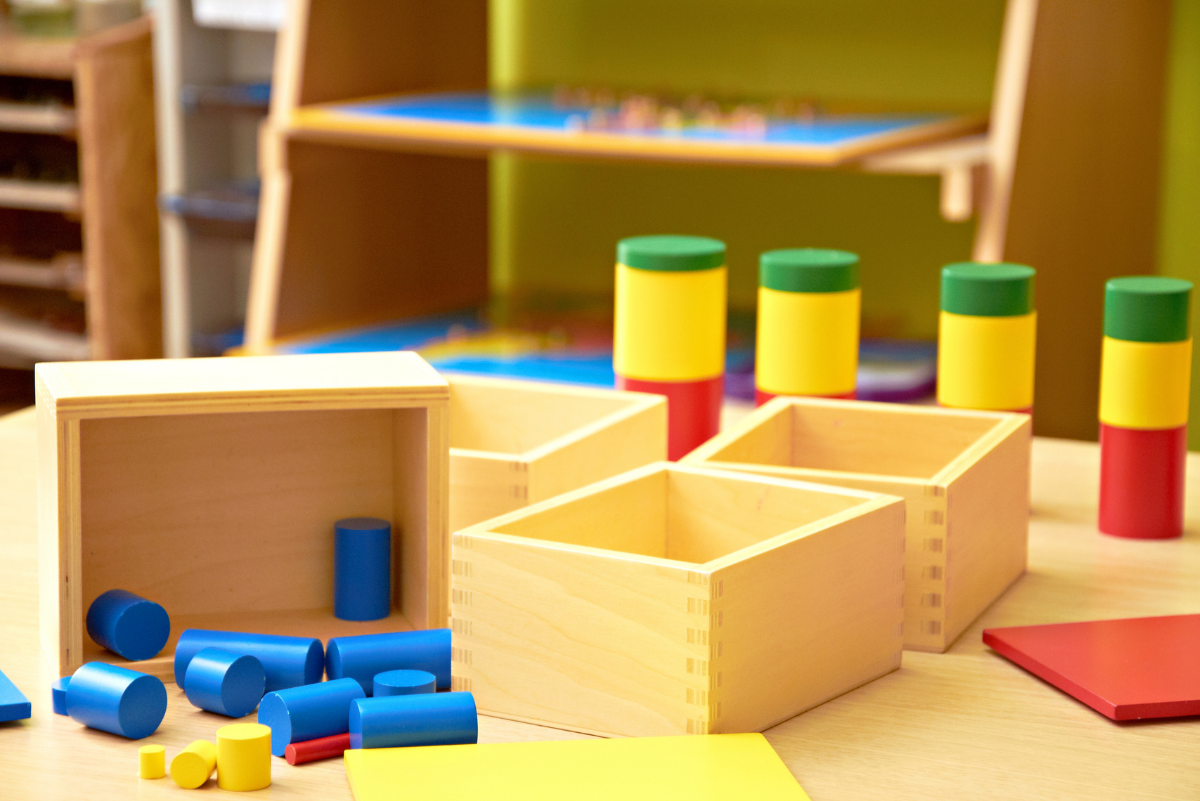
The main goal of the Montessori Method is to give students the skills they need to succeed in real life. Maria Montessori believed firmly that children want to learn and gain these skills; they just need guidance, patience, and support.
Self-Motivation
The Montessori curriculum encourages children to pursue their natural interest in learning and growing as people. The entire goal of this teaching style is to make sure that students grow up feeling confident and capable of making their own decisions.
Because this goal is so central to Montessori values, it can be found in nearly every aspect of the teaching method. Students learn to choose and complete their own activities. They learn to solve problems without relying on teacher assistance. They learn how to make and fix mistakes, and they learn when it’s important to ask for help. By the time they’re done at Montessori school, most kids have no problems starting and completing their own independent projects.
Abstract Concepts
Another one of Maria Montessori’s fundamental goals was teaching children how to understand the connection between reality and abstract concepts like language and math. When she first developed the method in the early 1900s, she felt like most of the existing educational materials expected students to understand too much before they were able to learn.
With this idea in mind, Dr. Montessori created a variety of learning materials that were more appropriate for the way children see the world. She believed that hands-on learning is the most effective, which is why most of her materials have a tactile or physical focus. More importantly, Montessori encouraged teachers to be aware of the need for a connection between the concepts they teach and the experiences that their students will have.
Practical Skills
Unlike other educational models, the Montessori Method assumes that kids want to start participating in life as soon as possible. This is why it’s not uncommon to see Montessori kids of all ages cleaning up the classroom, preparing their own meals, and working on complicated arts and crafts.
Dr. Montessori believed strongly that children should do chores to learn, not necessarily to get those chores done. That’s why every Montessori teacher is prepared to put their own classroom back together after the kids have left for the day. The practical skills taught in a Montessori classroom are for the children’s benefit, and their teachers guide them to make sure they develop at a comfortable and healthy rate.
Sense of Community
The Montessori style of learning teaches everyone in the classroom how to get along while maintaining their independence. Students learn to work alone, but they also learn to share materials, plan around other students, and participate in group projects. Every student is given their own chance to engage with a particular lesson or spend time consulting with the teacher, and a flexible approach is taken to ensure that different kinds of emotional and educational needs can be met.
The result of this philosophy is a tight-knit community founded on mutual respect and appreciation. Montessori students know how to make friends, but they also know how to rely on themselves. This social understanding makes it easy for a Montessori graduate to succeed in nearly any aspect of life.
The Montessori Method is a foundational philosophy intended to teach competence and self-reliance. Good Montessori teachers always prioritize the success of their students, so don’t be surprised to see individual classrooms that have been adapted to reflect the local culture. As long as the students are happy and engaged with their studies, the Montessori Method will help them find success.





















